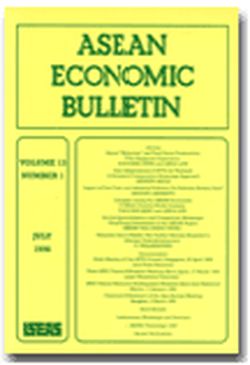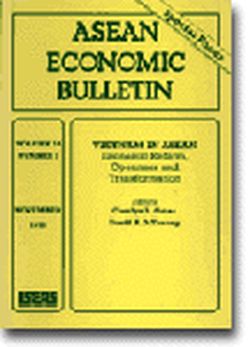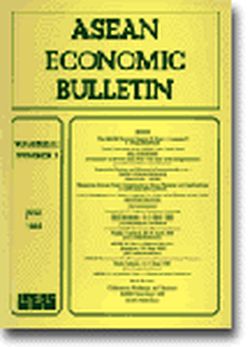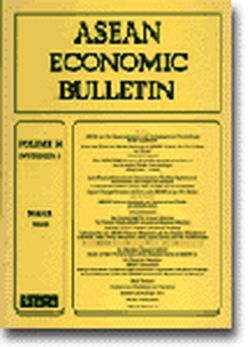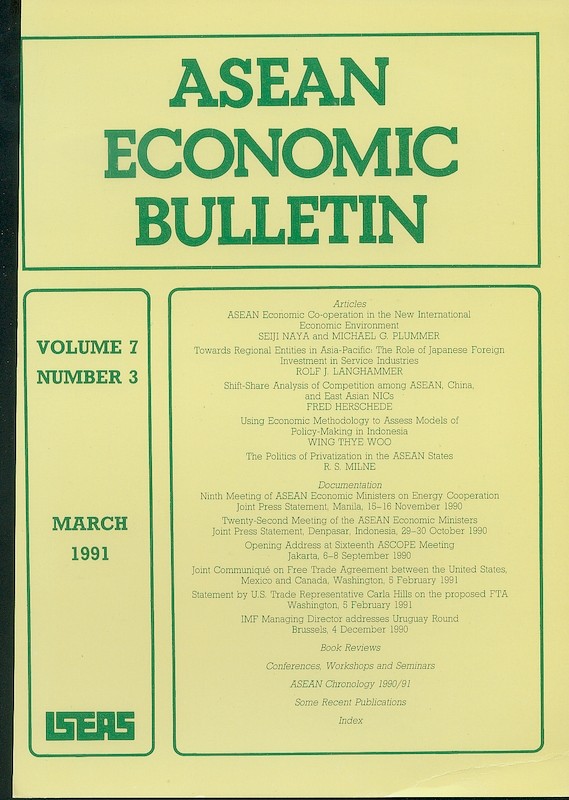ASEAN Economic Bulletin Vol. 13/3 (Mar 1997)

Date of publication:
March 1997
Publisher:
Institute of Southeast Asian Studies
Number of pages:
140
Code:
AE13/3
Contents
-
Preliminary pages
- ARTICLES:
-
Unemployment in Industrial Countries: A Danger to ASEAN? see abstractFull employment policies encouraged international trade and capital flow liberalization, enabling industrial countries to grow rapidly in the 1950s and 1960s and providing access to their markets to developing countries. The industrial countries' failure to adjust to rapid technological change, however, resulted in rising inflation and unemployment from the end of the 1960s. A wave of new protection against labour-intensive imports from developing countries followed in the 1970s. The growth of imports of clothing and textiles from ASEAN countries decelerated. Unemployment limited women's access to full-time work and was highly concentrated among young people, minority ethnic groups and older people. Fortress regionalism and calls for fair trade marked further protectionist reactions. Unemployment has become the industrial countries principal economic problem. It is giving rise to political unrest in industrial countries and to difficulties in international trade that threaten the global trading environment. The growth of imports from developing countries, including ASEAN countries, and capital flows to them, have been reduced below their potential. The policy reforms being undertaken by most industrial countries are too little and too late.
-
An Examination of ASEAN Stock Markets: A Cointegration Approach see abstractUsing co-integration analysis, this study tests whether ASEAN stock markets are collectively efficient. It is argued that if the asset (stock) markets are collectively efficient in the long run, these asset (stock) prices are not co-integrated, that is have no long run relationship. On the other hand, the presence of co-integration provides evidence of an interdependent relationship. The results suggest that with the exception of Indonesia all the markets are linked with each other. Thus, during the period. 1987-95 these markets were not collectively efficient. From an investor's point of view, however, these results would suggest that despite evidence of interdependence among the ASEAN stock markets, there is still scope for efficient portfolio diversification across these markets.
-
Auto Industrialization in Southeast Asia: National Strategies and Local Development see abstractThis article investigates transnational production organization, national industrial strategies, and local development in the Southeast Asian automobile industry. We investigate technology transfer and localization of production among subsidiaries in Toyota Motor Corporations' ASEAN production network in relation to national and regional industrial and trade policies. Our findings suggest (1) there is an ongoing, incremental transfer in products and processes, which is (2) underpinning a growing ASEAN middle class, and (3) a post-keiretsu network among Japanese and indigenous companies in the region. Future directions in the ASEAN automobile industry are also assessed.
-
Determinants of Productivity Growth in the Malaysian Manufacturing Sector see abstractThe objective of this study is to examine the influence of trade policies and industry characteristics on productivity growth of the Malaysian manufacturing sector between 1986â91. The results show that productivity growth in the Malaysian manufacturing sector was influenced positively and significantly by the rate of growth in output, exports as well as by foreign investment. In contrast, increasing capital intensity is seen to have a negative impact on productivity growth. Examining the labour situation in Malaysia reveals severe labour constraints that may have hindered the absorption of the productivity gains from the increases in capital. Hence trade policies need to be complemented by appropriate industrial policies in the nationâs pursuit of higher productivity growth.
-
Why Has Myanmar not Developed Like East Asia? see abstractMyanmar was slated to be the most promising economy in the region when it first gained its independence in 1948. Today, it remains an economic laggard. Why has it failed to achieve its economic take-off ? This article argues that the question can best be answered by examining why the East Asian NIEs had implemented certain policies and yet the same measures were not taken in Myanmar all through these years. For instance, Myanmar never sought to exploit the dynamic comparative advantage of international trade; it failed to encourage domestic savings; and, above all, it also neglected human resources development including entrepreneurship as the single most important factor of the East Asian economic success.
-
DOCUMENTATION: Meeting of the Heads of ASEAN Investment Agencies, Shah Alam, Malaysia, 4-5 July 1996, Joint Press Statement
-
DOCUMENTATION: Twenty-Ninth ASEAN Ministerial Meeting, Jakarta, 20-21 July 1996, Joint Communique
-
DOCUMENTATION: Eighteenth Meeting of the ASEAN Ministers on Agriculture and Forestry, Manila, 28 August 1996, Joint Press Statement
-
DOCUMENTATION: Tenth AFTA Council Meeting, Jakarta, 11 September 1996, Joint Press Statement
-
DOCUMENTATION: Twenty-Eighth Meeting of the ASEAN Economic Ministers, Jakarta, 12 September 1996, Joint Press Statement
-
DOCUMENTATION: First ASEAN-India Joint Cooperation Committee Meeting, New Delhi, 14-16 November 1996, Joint Press Release
-
DOCUMENTATION: Reforms for the New Era of Japan and ASEAN: For a Broader and Deeper Partnership, Policy Speech by Ryutaro Hashimoto, Prime Minister of Japan, presented at the Singapore Lecture, Singapore, 14 January 1997
-
BOOK REVIEWS: The Key to Asian Miracle: Making Shared Growth Credible. By Jose Edgardo Campos and Hilton L. Root (reviewed by Ozay Mehmet)
-
BOOK REVIEWS: Population in Asia. By Warren C. Sanderson and Jee-Peng Tan (reviewed by Warwick Neville)
-
BOOK REVIEW: Singapore-India Relations: A Primer. Edited by Yong Mun Cheong and V.V. Bhanoji Rao (reviewed by Muinul Islam)
-
BOOK REVIEW: People's Initiative for Sustainable Development: Lessons of Experience. Edited by Syed Abdus Samad, Tatsuya Watanabe, Seung-Jin Kim. Seeds 2: Supporting Women's Work around the World. Edited by Ann Leonard (reviewed by Heike Stengel)
-
Conferences, Workshops and Seminars; ASEAN Chronology 1996; Recent Publications; Index

